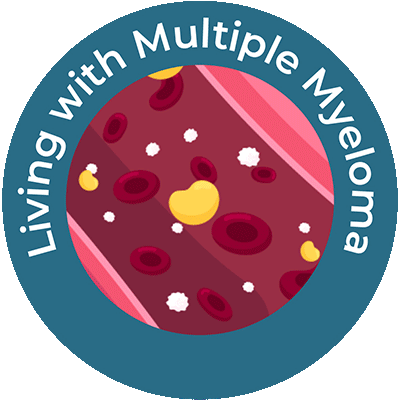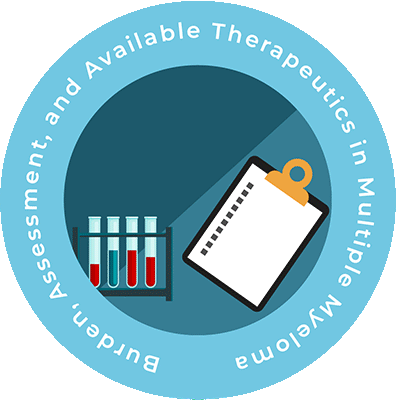FAQs
Multiple myeloma is a type of blood cancer that occurs when cancerous cells called myeloma cells build up in the bone marrow. Myeloma cells can crowd out healthy blood cells and cause harmful blood problems, as well as destroy bone tissue, causing pain, fractures, and high calcium levels. People with multiple myeloma often have tumors called plasmacytomas in different bones or areas of the body. These cancerous cells can also reduce the number of healthy blood cells in the body, increasing the risk of infections. Multiple myeloma is more common in older adults, men, Black people, and first-degree relatives of people with the disease. There are many treatment options available for multiple myeloma, and scientists continue to learn more about the disease.10
Multiple myeloma typically starts with a gene mutation that turns normal plasma cells into harmful myeloma cells that can damage your body. These damaged plasma cells can make new myeloma cells and antibodies that can harm your bone, kidneys, and other organs. Fortunately, the types of mutations that cause multiple myeloma are not typically passed down in families. Even so, you may have a higher risk for myeloma if another family member also had myeloma.10
Multiple myeloma affects the bones and bone marrow and often results in bone pain, fatigue, and frequent infections. Malignant cells in multiple myeloma can damage bones and release chemicals that break down bone, which may lead to fractures, bone pain, and fatigue. Myeloma can also cause anemia, which can contribute to fatigue as well. Your tendency to bruise or bleed might also increase, as platelet counts might be affected. Monitoring of platelet counts is an important to consideration. Kidney damage can also occur, so monitoring your kidney function is also an important part of treatment.10
The 2 basic types of multiple myeloma are active and smoldering. While myeloma that is causing symptoms should be treated, results from certain lab tests can also show that it is time to start treatment. Smoldering myeloma usually does not require immediate treatment, but typically requires regular testing that can help identify important clues that the condition is progressing. For example, your oncologist might check for a high level of M-protein in the bone marrow, kidney problems, bone lesions, too much calcium, too few red blood cells in the bloodstream, and other signs of myeloma. Unlike smoldering multiple myeloma, active myeloma is myeloma currently causes symptoms or affects organs, and often occurs in patients who previously had soldering multiple myeloma. In people with active multiple myeloma, more treatment options can be considered.10










